|
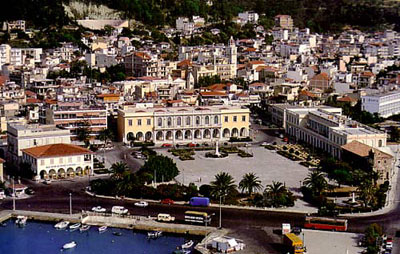
Zakynthos Town is the island's capital. After the earthquake and fire
on August 9th 1953, the town was rebuilt preserving the Venetian and
Byzantine style wherever possible.
The town was historically known as 'The Venice of the South'.The layout
of the town is generally the same as before the earthquake with a
well-organised grid system rising up towards the hills inland.
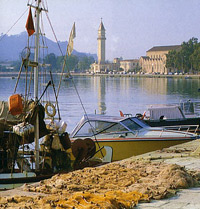
Zante Town the commercial and cultural centre of the island and there
are currently approximately 30,000 inhabitants.
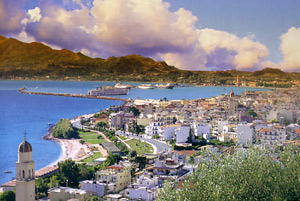
Zante Town - a view of the capital, the busy harbour and the mountain
range heading down through Argasi and Vassilikos.
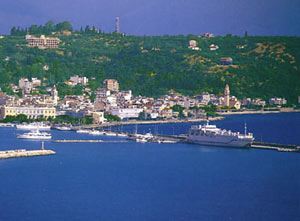
The Strata Marina (Marine Drive) is the busiest part of the town.
This is the embarkation point for the numerous passenger and car ferries
to and from the island.
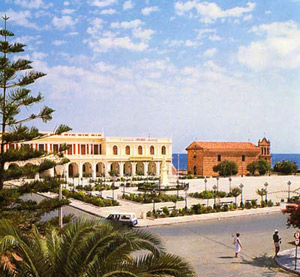
The town is the cultural centre of the island with a number of impressive
museums including The Museum of Byzantine Art (Tues - Sun
8.30am - 3pm ).
The Byzantine Museum can be found in Solomou Square and offers collections
by Doxaras, Koutouzis Damaskinos, Tzanes and Kandounis. This is
one of the best collections of the Ionian School and is well worth
a visit for its realistic depictions of religious subject matter.
The Solomos Museum on Platia Ayiou Markou (Mon - Sat 8.30am
- 3pm Free) contains a collection of manuscripts by Dionyssios Solomos
(1798-1857).
The Museum of Zakynthos (Tues - Sun 8.30am - 3pm ) is an
interest collection of local historical artefacts.
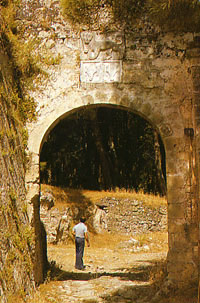
On the top of the hill which provides a natural defence for the
town, you will find the magnificent ruins of the Venetian Fortress
(the Kastro) built in 1646. (July to October, Tuesday - Sunday
08.00 - 19.00 telephone 48099).
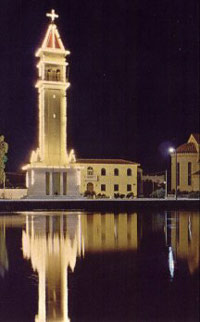
The southern end of the town is dominated by the Church of St Dionysios,
the patron saint of the island. St Dionysios, the patron saint of
fishermen, preached on the island in the sixteenth century.
The building was one of the few survivors of the 1953 earthquake
and was erected in 1948. The bell tower is modelled on that of San
Marco in Venice and is a tribute to the Venetian architectural legacy
on the island.
The church has a large collection of icons representing the saint's
life as well as his silver coffin.
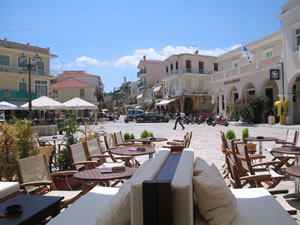 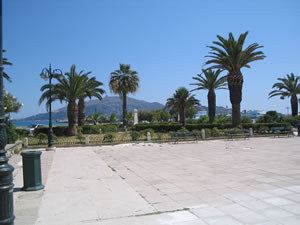
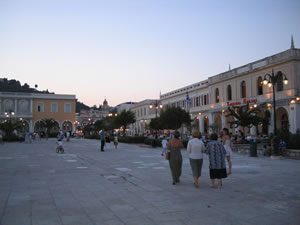 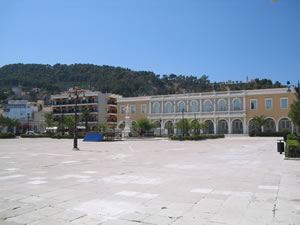
.jpg) 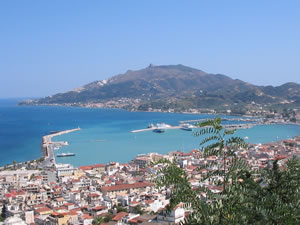
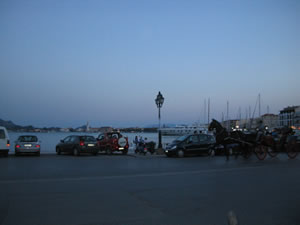 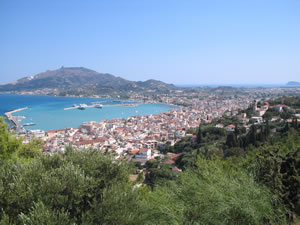
|











.jpg)


